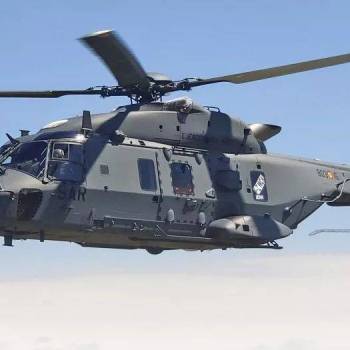AMX Leclerc in Yemen
The Saudi Ministry of Defence would seek to acquire 200 heavy armored vehicles, including 50 "spare" (reserve). The French Leclerc is in the running, reportedly presented to the Saudis on 25 November. German, Turquish and South Korean tanks were also sought by Riyadh.
The Saudi army was noticeably impressed by the successful commitment of the United Arab Emirates’ Leclerc at the war in Yemen, where they had their baptism by fire, including in urban areas.
The entourage of the Minister of Defence confirmed it to the press on January 2016, ensuring that on his part, there could be "material to help restart" the production line of the Nexter tank. This assistance could take form of a loan of the French Leclerc in Saudi Arabia, pending deliveries of new vehicles by Nexter.
However, the following issue comes up: The Leclerc production line at Nexter was closed in 2007, after the delivery of the last 876 tanks built for the French Army and the United Arab Emirates. Nevertheless, one expert dossier estimates that given the importance of the order, it could be revived. But the difficulty would then come from suppliers and subcontractors, especially as the Leclerc needs to be modernized: its embedded computing system dates of the early 90s. For the army, this modernization is planned but would not occur before 2020. A Saudi contract could accelerate things. An industry professional estimates that it would take nearly three years between the signing of a contract and the delivery of the first device. As for the buying opportunity, it is now impossible (after the failures in Qatar and Colombia) as spare tanks were used as parts inventory detached for the army.
Facing Leclerc, KMW Germans (now merged with Nexter) offer their Leopard 2 in its latest version (A7), more modern than the current Leclerc. But again, the problem of the production line turns up: There are no production lines in Germany anymore, and the last active one is located in Greece. Furthermore, the Spanish line is now closed. The latter was in charge of providing the Leopard 2 that Saudi Arabia wanted to acquire, before the veto of the Vice Chancellor Sigmar Gabriel, who recently criticized Riyadh’s policy. While technically favorites, the Germans are not politically so.
As for the Turkish and Korean proposals, Altay and K2 respectively, experts believe that these tanks are not developed.
Saudi Arabia is currently in service with about 600 American-made tanks (M1A2 Abrams and M60A3). However, it seems the Abrams suffers from significant flaws, including the fragility of the turbine and its enormous fuel consumption: in the hot zone it can rise up to more than 700 liters per 100 kilometers, which is twice the amount of what the Leclerc requires. Their commitment demands a considerable logistics chain for fuel supply and maintenance of the turbines, especially in desert areas.
Beyond the heavy tanks, Saudi Arabia needs to renew its armored infantry and artillery park. France is in the running to supply 155 cannons. Until the Gulf War Saudi Arabia had two tank parks: one American (M60) and another French (AMX30).
The Char Leclerc is a main battle tank (MBT) built by GIAT, now Nexter, of France. It is currently in service with the French Army and the army of the United Arab Emirates. In production since 1991, the Leclerc entered French service in 1992, replacing the AMX 30 as the country’s main armoured platform. With production now complete, the French Army has a total of 406 Leclercs and the United Arab Emirates Army has 388.
Source: RP Defence, Secret Défense (L’Opinion)

Written by Patricia Ruiz
Patricia Ruiz is Environmental and Forestry Engineer and a Supply Chain Management Expert



